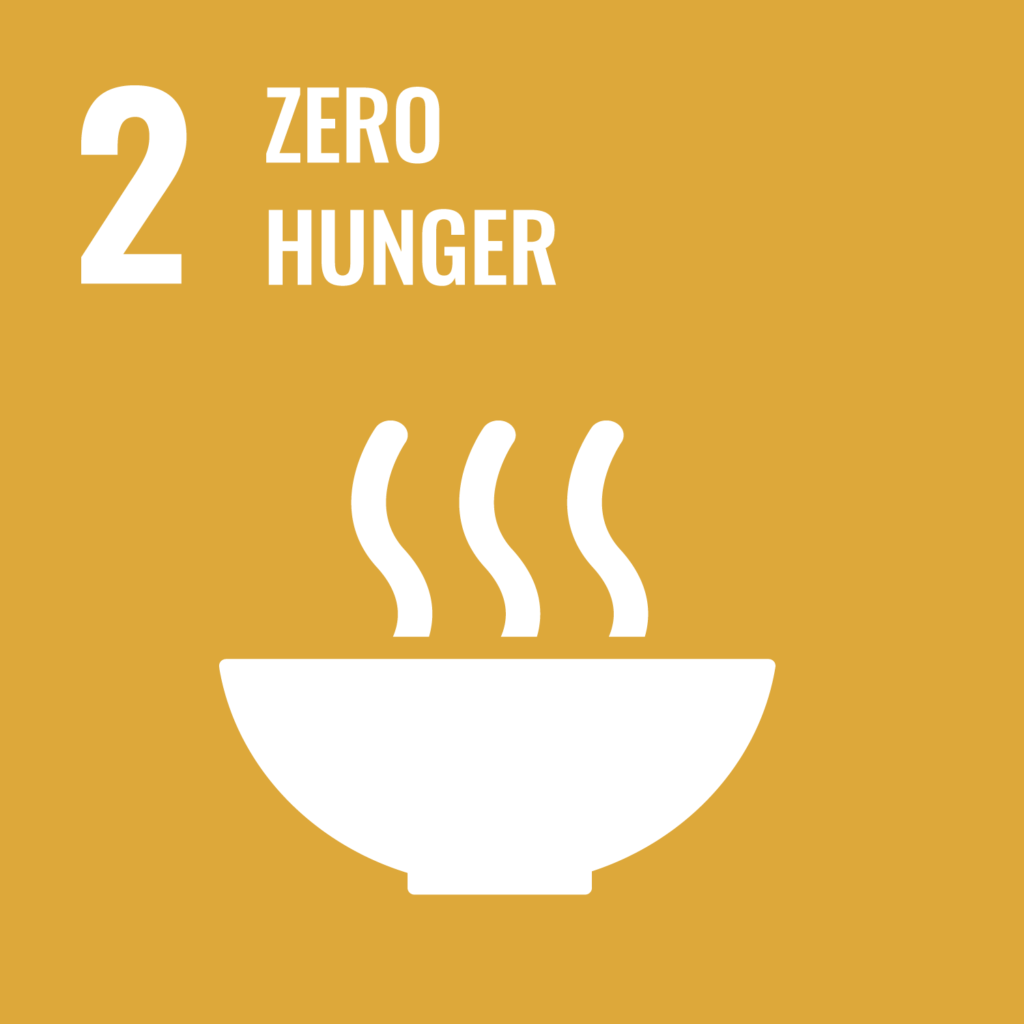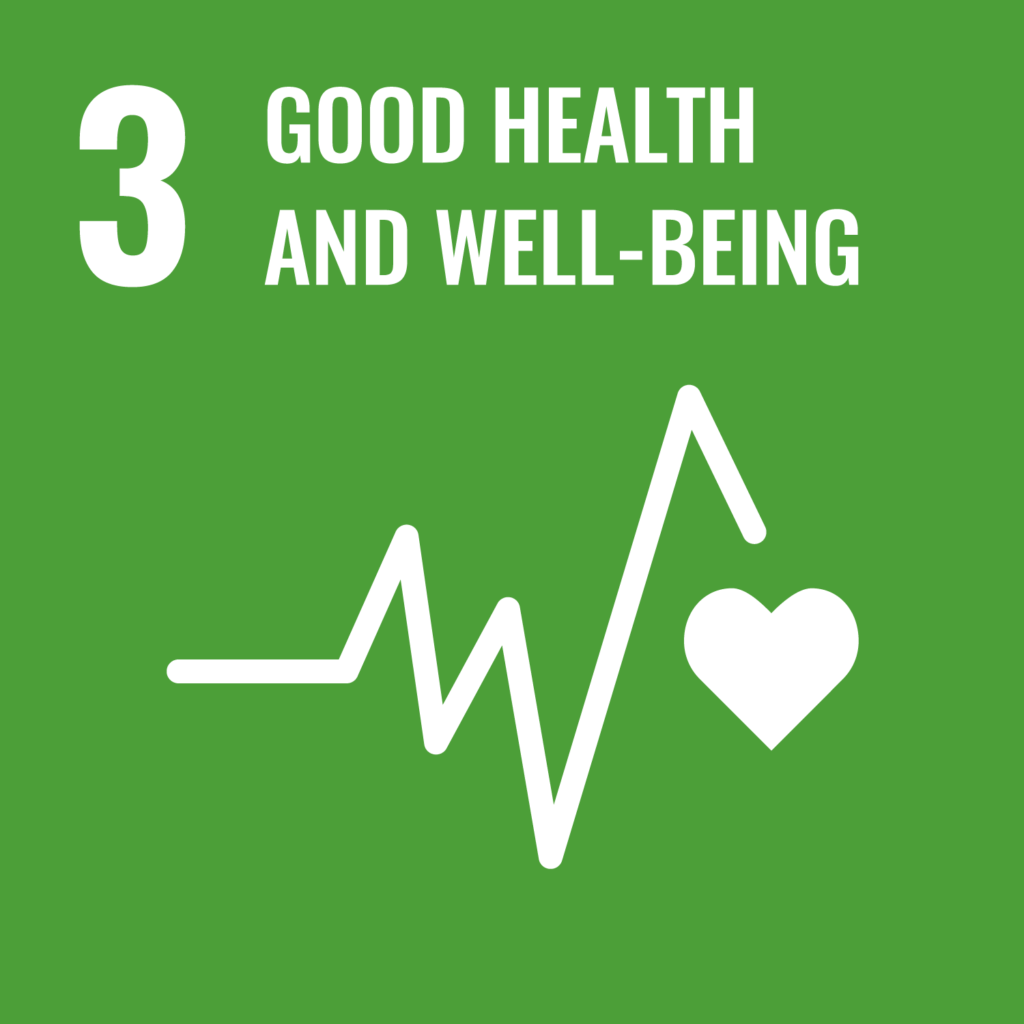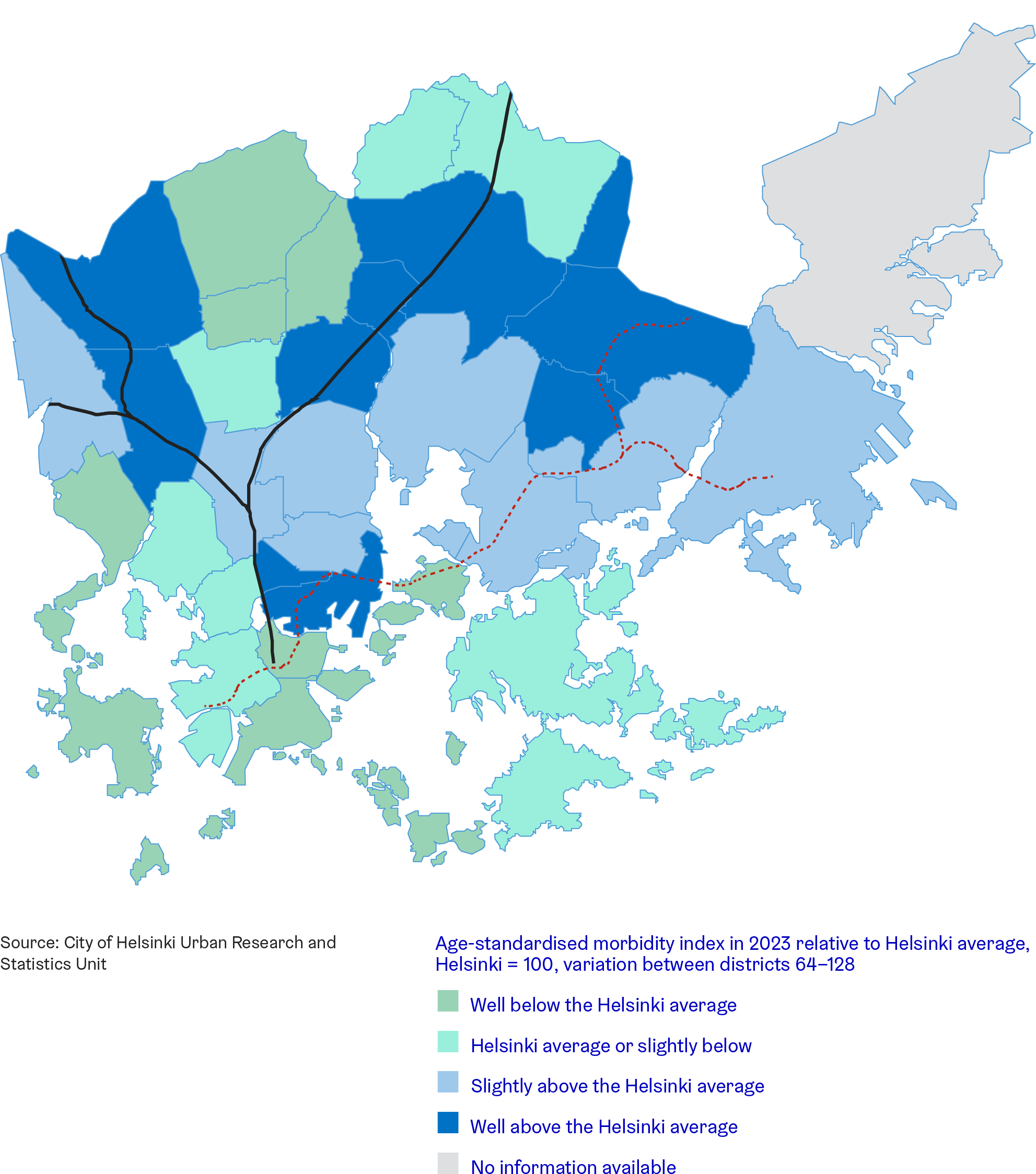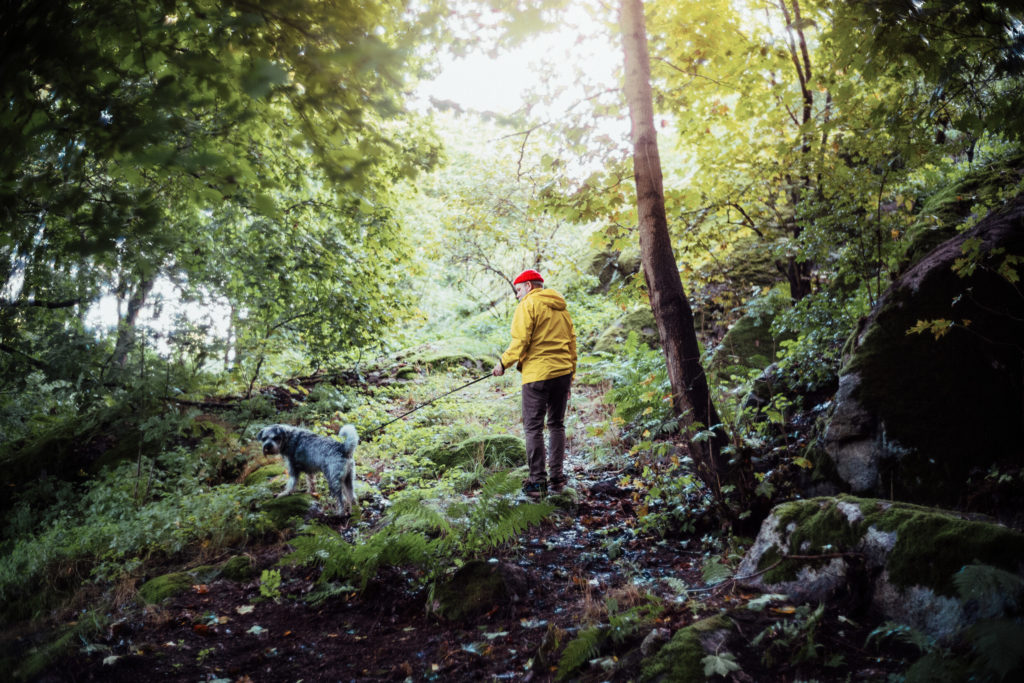


Health and well-being promotion (HYTE) involves preventive activities carried out jointly by all of the City’s operators, based on sustainable development, to boost the resources of different population groups. As part of the overall reform of the health care and social welfare system, the tasks of health and well-being promotion were given a strong legal basis.
The main objective is to reduce disparities in health and welfare. During the current council period of office, the City will strengthen its residents’ mental well-being, healthy lifestyles and everyday physical activity, as well as opportunities for meaningful recreation and leisure. Furthermore, the City will promote the development of good community relations and sets of objectives related to everyday security.
As part of the implementation of the work on health and well-being promotion, the Helsinki Welfare Plan 2022–2025 was approved by the City Council in November 2022. The contents of the plan promote the objectives of social sustainability from a cross-administrative perspective, addressing the well-being challenges identified through research.
In 2024, the first statutory health and well-being promotion negotiations were also held, where the City, in cooperation with organisations and other partners, discussed the objectives and measures to promote well-being and health.
City residents face diverse wellbeing challenges
Helsinki’s population is increasingly diverse. Alongside the increasing diversity of lifestyles, linguistic diversity is also growing, and the number of older people is increasing along with young age groups. An individual’s experience of their health and wellbeing affects their resources and also reflects on e.g. quality of life, social relationships, activity in society and ability to manage in everyday life. The majority of the adult population are happy and feel that their quality of life and health are good. However, the proportion of people who consider their quality of life to be good on average has declined in recent years, especially among working-age people. The perceived mental well-being of children and young people has also been at a more worrying level than in the past. Around one in five of the adult population also experience significant mental stress and 14% of older people experience loneliness.
There are differences in experiences of quality of life, health and happiness depending on perceived income adequacy. These differences may, in turn, be reflected in differences between population groups in lifestyles, mental wellbeing or morbidity. There is significant variation in the prevalence of morbidity and public diseases between the districts of Helsinki. The social challenges and unhealthy lifestyles underlying morbidity are concentrated on residents who are already in a vulnerable position.
Helsinki morbidity index by district

Lifestyle greatly influences health and well-being. In addition to physical inactivity, obesity, smoking and alcohol abuse are all linked to morbidity and reduced capacity to work. Perceived income adequacy has a connection to physical activity, i.e. young people who feel very good about their family’s economic situation and residents who perceive their income as fairly good or good are physically more active than the other population groups. Choices regarding modes of transport have a significant impact on the physical activity and well-being of residents: the city must be designed to make walking, cycling and public transport attractive choices that are competitive in terms of travel time. This can be influenced by traffic planning, land use planning, service network planning, maintenance, urban space planning and additions to street greenery.
The majority of Helsinki residents still consider their neighbourhood to be pleasant and safe at weekends, although these proportions have decreased compared to before. There has also been a slight increase in concern about disruptive behaviour. Safe, beautiful and functional everyday environments form the basis of the wellbeing and health of the city’s residents. As safety improves, people’s physical, mental and social health, well-being and quality of life are strengthened. Everyday environments refer to people’s homes, the surrounding environment and yard areas, the broader urban space and structure, and nature. This means that both the development of the broader urban structure and the promotion of safe living in the home environment are key to promoting health and welfare. Urban nature and green spaces also have a significant positive impact on health and wellbeing.
Addressing wellbeing challenges through City-wide development work
The City’s services have developed a range of early support models to strengthen the mental well-being of city residents. Examples include school coach activities, exercise coaches, learning of emotional and interaction skills, youth work and various recreational activities. The City has increased training for professionals in the early identification of mental health problems in children and young people.
There are many events aimed at older people to promote mental well-being, such as library walks and dancing events. Awareness of existing self-care programmes has been raised among all residents by organising information events led by professionals at the Helsinki Finnish Adult Education Centre Työväenopisto. There are many training courses for staff on mental well-being methods, materials and self-care programmes.
The City has offered children and young people a wide range of group-based leisure activities, for example as part of the Finnish Model for Leisure Activities and in Sports Services, Youth Services and libraries. The activities reach nearly 8,000 children a week with regular free hobbies, and the provision has been strengthened in areas where activity levels are lower.
The development of cultural work with older people is one of the priorities of senior centres, and staff skills in this area have been increased. Volunteering and peer activities and cooperation with organisations have been developed extensively. A wide range of training courses, lectures and events have been organised for volunteers on topics such as memory, non-native plant species, preparedness, emotional intelligence, voice care, exercise and loneliness.
The City has prioritised physical activity in its Welfare Plan 2022–2025 and targeted efforts at the city’s least physically active residents. The physical activity recommendation is currently best met by young children, whose physical activity has been increased by reinforcing physical activity as part of the basic early childhood education activities and by including the discussion of physical activity in children’s individual early childhood education plan discussions.
Comprehensive schools have promoted physical activity as an objective of the school action plan, through the development of national Move! measurements and through the KouluPT physical activity counselling service. Schoolyards have been equipped with 4,000 additional bicycle parking spaces.
Exercise coach activities have been extended to almost all of the City’s upper secondary schools, reducing the proportion of upper secondary school students who are the least active. In upper secondary education, the promotion of physical activity has been linked to communal student welfare, operating culture and safety work. The City has encouraged its employees to be more active through culture and sports benefits, exercise coaching and the promotion of active commuting.
The City has encouraged sedentary residents to engage in low-threshold physical activity through measures such as LiiKu support’s Physical Activity Card, library walks, an outdoor gym campaign, increased winter swimming opportunities and improved accessibility of beach signage. A mini-intervention model for the promotion of physical activity has been developed in multidisciplinary cooperation to support bringing up physical activity, providing service coordination and motivating clients to be more physically active.
A mobility agreement has been drawn up with 77% of the clients of Hospital, Rehabilitation and Care Services. Between 2021 and 2024, around 10–15 actions have been implemented each year to support older people’s physical activity, in cooperation between City operators, organisations and businesses. In 2023, a new Physical Activity Promotion Unit was launched in the City organisation to coordinate and develop joint work across the City to promote everyday physical activity.
The realisation of healthy lifestyles has been promoted through activities such as wellness cafés for upper secondary level students. Parents’ evenings have been organised for the guardians of upper secondary school students on topics such as sleep and nutrition. There is a wide range of courses and events for older people every year, including the arterial disease counselling tour, the brain health fair and the well-being and health fair.
An increasing number of people have taken the Omaolo digital health check. When a person completes the health check, they receive an estimate of their life expectancy and the most common disease risks. Around half of results indicating risks were sent to professionals for further action. The practices of substance abuse prevention have been improved, and the Smoke-free Helsinki network, for example, has responded to the increased use of e-cigarettes by children and young people by increasing awareness and knowledge of e-cigarettes among staff and parents. Cooperation between divisions will be strengthened when the welfare officers and psychologists of student welfare in basic education and upper secondary education move to the Apotti information system from January 2025 onwards.
Helsinki has participated in the Child Friendly Municipality initiative in cooperation with UNICEF. In September 2024, Helsinki became the first Nordic capital to be recognised as a Child Friendly Municipality. The work has advanced the rights of children through five different sets of objectives. Our professionals have actively participated in child rights training, and the number of participants is steadily increasing. A child impact assessment model to support decision-making has been completed and tools for involving children have been created. As part of the work, a bullying prevention and intervention policy and feedback collection models have been produced. Several pilots have also been carried out to increase children’s and young people’s sense of security. At the upper secondary level, the action cards on addressing bullying, harassment and violence have increased the capacity and activity of staff to promote the safety and well-being of young people in educational institutions.
Helsinki has implemented a wide range of measures to strengthen the experience of safety and neighbourhood comfort in cooperation with its residents. The measures are also reflected in the everyday environments of city residents in the form of works of art and safer schoolyards, for example. Furthermore, the City has carried out nine placemaking pilots in suburban regeneration areas, creating temporary improvements to the environment in intensive cooperation with children and young people.
The work of the home and leisure injury working group has included identifying data on road traffic accidents, drownings, poisonings and burns, classifying different types of accidents and making suggestions on how to improve the work.
As a city, we participated in an extensive education and partnership programme with Bloomberg Philanthropies and Harvard University. It provided training for our professionals in cross-administrative cooperation in the field of child and youth safety and regional cooperation. This work is still ongoing in the regional cooperation networks for children, young people and families.
Helsinki has been actively involved in international cooperation on the theme. Under the Partnership for Healthy Cities, Helsinki receives annual funding to prevent the increase in non-communicable diseases. For 2020–2022, the City of Helsinki received funding for a project to develop and pilot a model for promoting children’s safe and active travel to school and everyday physical activity. In 2023–2024, the funding has been allocated to the production of new regional research data in cooperation with the Finnish Institute for Health and Welfare THL. The development work has resulted in new and unique regional data produced by businesses and organisations.
Planetary well-being has been addressed as part of the WHO Healthy Cities network. In 2024, a collaborative seminar on shared health and planetary well-being was organised, focusing on exploring the role of the urban environment in promoting health and well-being. As part of this work, the Place Standard Tool was published in Finnish to help strengthen participation in neighbourhood planning.
Successes:
- The safety aspects of residents’ daily lives have been actively promoted with residents, organisations and other partners.
- Through its targeted work to promote children’s rights, Helsinki has become the first Nordic capital to be recognised as a Child Friendly Municipality.
- The Finnish Model for Leisure Activities has become a permanent fixture for pupils in grades 3–9.
- Physical activity has been promoted as a common objective across all divisions. Hundreds of thousands of Helsinki residents have been reached through campaigns, events, websites and materials.
- In upper secondary education, the proportion of students who are the least active has decreased.
Areas for development:
- We still need evidence-based approaches and services to address mental well-being challenges. The perceived mental well-being of children and young people, especially girls, has been at a more worrying level than in the past. More than a third of young girls experience moderate or severe anxiety. Mental stress is also common among working-age and older people.
- Young people’s mental health must be improved while supporting future work ability and the vitality of the city. Physical activity must be promoted as part of student welfare; increasing physical activity has been shown to improve not only physical health, but also mental health, learning ability and cognitive skills. A pedagogy of hope must be promoted across the board in upper secondary education to ensure faith in the future and future competence.
- Different population groups’ experiences of safety in everyday life must be improved through City-wide development measures.
- Healthy lifestyles need to be promoted and policies strengthened through City-wide development (physical activity, sleep, nutrition, substance abuse prevention).
- A shared understanding of the importance of nature and the urban environment for the well-being of city residents must be increased.
Programmes, studies and websites:
Health and welfare promotion website
Well-being, Health and Safety for Everyone – The City of Helsinki Welfare Plan 2022–2025 PDF
Annual monitoring reports and indicators of the City of Helsinki Welfare Plan


